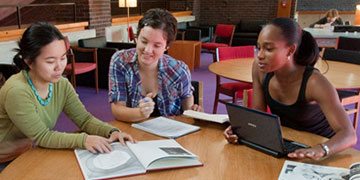To access this work you must either be on the Smith College campus OR have valid Smith login credentials.
On Campus users: To access this work if you are on campus please Select the Download button.
Off Campus users: To access this work from off campus, please select the Off-Campus button and enter your Smith username and password when prompted.
Non-Smith users: You may request this item through Interlibrary Loan at your own library.
Publication Date
2024-5
Document Type
Capstone
Study Type
ENV 312: Sustainable Solutions
Department
Environmental Science and Policy
Advisors
Camille Washington-Ottombre
Abstract
Smith College is on track to meet its pledge to be carbon neutral by 2030. The geothermal energy initiative is expected to reduce campus emissions by up to 90%, with the remaining gap to be closed by carbon offset purchases by 2030.1 This project engages two umbrella approaches to Smith’s final steps to reach net zero. The first builds on a past 312 project that proposes guidelines for buying verifiably high-quality offsets from the carbon market based on total carbon sequestration and the promotion of social and ecological co-benefits. Our alternative approach considers a contribution-focused protocol that posits Smith as a rotating grant fund for developing clean energy, waste management, and conservation projects. By expanding the scope of viable project candidates, we identify significant social justice, educational, and research benefits for the Smith community. Evaluation criteria for this initiative involved cost and quantity of offset credits produced, environmental quality and climate justice as well as research, education and innovation principles of Smith College. One essential benefit of this approach would be opening up funding streams for sustainability work on-campus and at sites of study abroad to facilitate continued student engagement. We propose evaluation criteria to determine reputable mitigation programs, including cost and quantity, environmental quality, and adherence to the research, education, and public service mission of Smith as an institution. We outline a roadmap to 2030 for a contribution approach in compliance with Second Nature’s protocol standards, as well as a mixed approach that combines elements of both traditional and nontraditional carbon offsets.
Rights
© 2024 The Authors
Recommended Citation
O'Meara, Abigail; Reagan, Katelyn; and Klotz, Samara, "Planning Smith’s Final Steps to Net Zero: Alternatives to Traditional Carbon Offsets" (2024). Capstone, Smith College, Northampton, MA.
https://scholarworks.smith.edu/other_projects/235
Smith Only:
Off Campus Download


